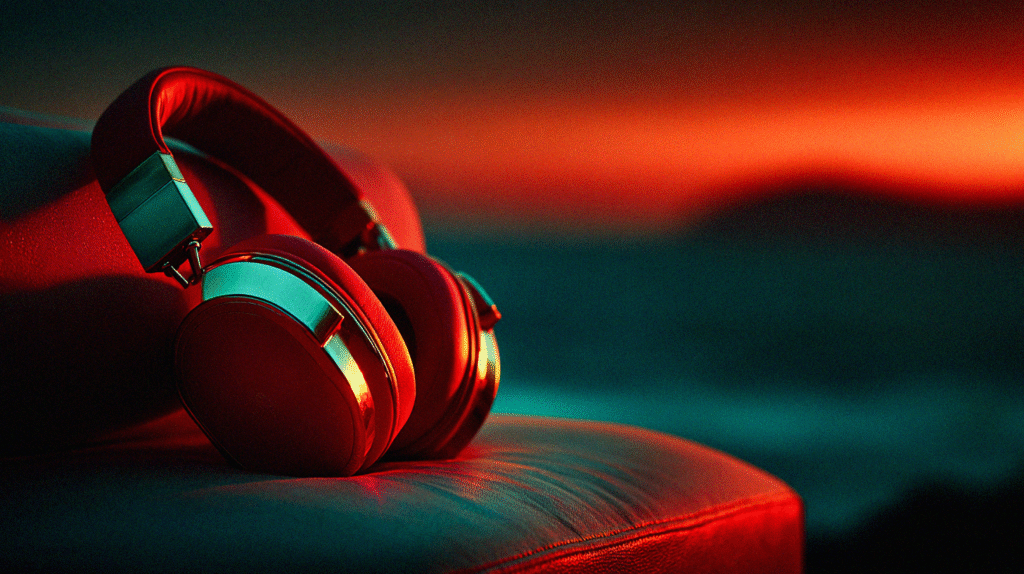Calming music genres for stress relief can be a fast, reliable reset when study pressure, busy workweeks, or life feels overwhelming.. Research shows that the right music can lower cortisol, heart rate, and perceived stress, supporting the nervous system’s “rest-and-digest” response. Taylor & Francis Online
Below is a practical guide to five gentle, proven-calming genres—classical, lo-fi, ambient, jazz, and chillout—including why they work, how to listen for maximum benefit, and playlists to try. If you’re on the Sunshine Coast (Noosa, Peregian, Coolum, Maroochydore), we’ve sprinkled in tips you can use at home, at work, or before your next lesson at GS Music Lessons.
1) Classical — deep calm, clear focus

Why it works: Slow to moderate tempos (often 60–80 BPM), steady dynamics, and predictable phrasing help reduce physiological arousal and increase heart rate variability (HRV)—a marker linked with better stress resilience. In large samples, classical in particular shows strong HRV benefits compared with other genres. repository.tilburguniversity.edu
Try this: Peaceful Piano (Spotify editorial), Max Richter (Sleep excerpts), Satie, Pärt, Debussy. Spotify
How to listen: Keep volume low-moderate; choose pieces without sharp dynamic jumps; 10–20 minutes is enough for a reset.
2) Lo-Fi — soft beats, no lyrical distraction

Why it works: Lo-fi tends to be instrumental, loop-based, and low-contrast—great for study and gentle mood regulation because lyrics can compete with language processing during reading or writing. Studies show music with lyrics distracts more than instrumental tracks for many cognitive tasks. Frontiers
Try this: Lofi Girl’s 24/7 stream, or Spotify mixes like LOFI BEATS Mix. Wikipedia+1
How to listen: Keep it just audible; if you find yourself analysing the beat, go simpler or lower the volume.
3) Ambient — breath-paced, weightless soundscapes

Why it works: Ambient emphasizes texture over melody, minimal rhythm, and gradual evolution. One famous example, Marconi Union’s “Weightless,” was designed with sound therapists and found to reduce stress/anxiety markers more than comparison tracks in lab testing (Mindlab International). The British Academy of Sound Therapy
Try this: Ambient Chill (labels like Valley View Records curate long, low-intensity tracks). Spotify
How to listen: Dim the lights, breathe slowly (4 seconds in, 6 out), and avoid multitasking for 8–10 minutes.
4) Jazz (cool/ballads) — mellow swing, relaxed feel

Why it works: Slow jazz ballads and cool-jazz textures reduce arousal thanks to subtle dynamics, spacious harmony, and gentle swing. Mechanistically, slower, low-arousal music supports parasympathetic (calming) activity and healthier autonomic balance. ScienceDirect
Try this: Coffee Table Jazz (smooth, laid-back cuts perfect for evening wind-downs). Spotify
How to listen: Choose ballads under ~80 BPM; avoid high-energy big-band tracks when you’re trying to unwind.
5) Chillout / Lounge — modern downtempo ease

Why it works: Chillout blends soft electronic textures, laid-back beats, and warm pads—predictable, low-contrast sound that’s easy on the nervous system. Clinically, music therapy overall shows meaningful anxiety reductions across many settings, so a listener-preferred, low-arousal genre like chillout is a simple, accessible option. The Lancet
Try this: Spotify’s Chillout Lounge (editorial). Spotify
How to listen: Use it as background for journaling, post-work decompression, or bedtime reading.
How to get the most from calming music
- Volume: Keep it low—enough to hear detail, not enough to dominate attention.
- Tempo & dynamics: Aim for slow to moderate tempos and steady dynamics (avoid sudden drops/spikes). Taylor & Francis Online
- Session length: Even 8–15 minutes can trigger measurable relaxation; consistency matters more than length. Taylor & Francis Online
- No lyrics when focusing: For reading/writing, choose instrumental tracks to reduce distraction. Frontiers
10-Minute “Breathe + Listen” Reset (Noosa edition)
- Find quiet: Balcony, backyard, or a shady spot by the Noosa River.
- Pick one playlist: Peaceful Piano, Ambient Chill, or Coffee Table Jazz.
- Timer: 10:00. First 2 minutes: slow nasal breathing (4 in, 6 out).
- Light stretch: Neck rolls + shoulder circles.
- Eyes soft: Just listen; let thoughts pass.
- Finish: One action—write a to-do, fill a water bottle, or book a trial lesson.

Note: Music is a powerful complement, not a substitute for professional mental-health care.
Sunshine Coast students: de-stress by learning an instrument
At GS Music Lessons (Noosa & Sunshine Coast), we see it daily: learning drums, guitar, piano, or violin builds routine, breath control, and focus—great antidotes to stress. Book a Trial Lesson and we’ll tailor a calm, confidence-building plan for you or your child.
Quick playlist starters
- Classical: Peaceful Piano
- Lo-Fi: LOFI BEATS Mix
- Ambient: Ambient Chill
- Jazz: Coffee Table Jazz
- Chillout: Chillout Lounge
